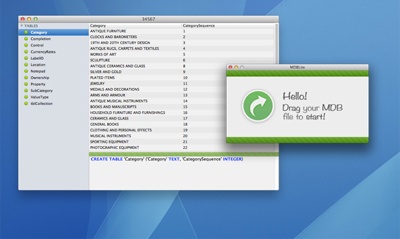FOR IMMEDIATE RELEASE
=====================
Contact: Lee Fitzpatrick
Manning Publications Co.
203 629 2078
203 661 9018 fax
lee@manning.com
or see: http://www.browsebooks.com
MAKING SENSE OF JAVA: A guide for managers and the rest of us
By B. Simpson, J. Mitchell, B. Christeson, R. Zaidi, and J. Levine
180 pages, $29.95, ISBN: 0-13-263294-2
Greenwich, CT, May 30, 1996 — Manning Publications Co. today announced the
publication of “MAKING SENSE OF JAVA,” a unique computing book accessible
to non-programmers.
The hottest technology to emerge in the computer industry in years,
and a hit among those who create applications for the Internet, is the new
computer programming language Java. Designed by Sun Microsystems to be used
in a globally networked environment, Java makes it easy to create small
programs that can be sent to any computer on the Internet to perform all
kinds of new things inconceivable in the past. By embedding small Java
applications (“applets”) in Web pages to provide animation, interaction,
and intelligence, Java is the tool of choice to bring life to Web pages
that have largely been staid collections of text and static images.
Software developers pounced on the language as soon as Sun
announced it at the San Francisco SunWorld conference in May of last year,
and many now view it as a future standard. Dozens of books have been
published and all of them–good and bad–sell out as quickly as bookstores
receive them. Until now, all of them have been aimed at programmers.
Magazine articles have provided necessarily sketchy coverage of Java’s
exciting potential, leaving development managers and other observers of
industry trends without the kind of balanced and complete overview possible
only in a book.
“MAKING SENSE OF JAVA: A guide for managers and the rest of us”
will close this gap on May 31 when the first copies are released to the
booktrade. The only source on this new technology accessible to mere
mortals, “MAKING SENSE OF JAVA” will give managers and other business
people a broad overview of Java, with just enough detail to understand the
excitement it has generated and to plot their own course in the agitated
waters of the Internet, the World Wide Web, corporate intranets and secure
net transactions.
The author team of Bruce Simpson of Auckland New Zealand, John
Mitchell of Moraga California, Jon Levine of San Francisco, Brian
Christeson of Alexandria, New Hampshire, and Rehan Zaidi of Waterloo,
Ontario (Canada), represents well the eclectic Java community. Their ages
range from 22 to 50, and they are consultants, programmers, writers,
managers, and a student, who have actively participated in the Java
maelstrom.
Manning Publications of Greenwich, a small, selective press
specializing in computer books, will offer the entire book for sale on the
Web as an electronic document (a “cyberbook”) for less than a third the
price of a printed copy. Publisher Marjan Bace says, “Cyberbook purchases
will be secure, encrypted electronic transactions. Buyers will transmit
credit card information to us over the Internet in scrambled form
impossible to read (and therefore to steal) except by cryptology
specialists with huge computers–not a significant risk.” Cyberbook buyers
will be entitled to purchase the printed copy at a discount equal to the
cyberbook price; thus they will receive the electronic version of the book
with no surcharge. Cyberbook buyers will be asked to agree to use the
book’s content for personal purposes only. These could include pasting
excerpts or illustrations from the book directly into a manager’s
presentation.
The book can be browsed on the World Wide Web at the above site,
with the table of contents, two chapters, the index, and other book parts
available at a click of the mouse. The site also shows the book as a three
dimensional object. Starting with a frontal view, the book turns, showing
gradually more of the spine and then of the back cover.


